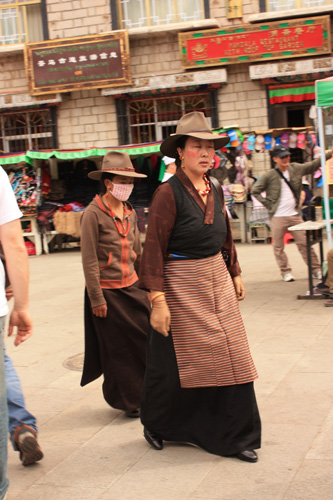Reconstruction |
I am finally free in Lhasa, having abandoned our group. I have luxuriously slipped into art making as the unknown, anonymous tourist.
Early the next morning, a drunk man is out alone on an empty street, Lhasa Beer bottle in hand, steadying himself on a shop girl’s stand. I walk past the guards, the army convoys, the suave Tibetan men and the humming old women to find yak hair.
A textile dealer has led me upstairs in his home where the animal skins are hanging. White fur and yak are everywhere. A small crumpled tiger skin lies in the corner. I suddenly realize that I am in an illegal animal trade. “800 yuan”--$130 dollars--he punches on his calculator. Walking away shaking my head no, he lowers the price two-thirds. The American is driving a hard bargain. “I don’t want it,” I repeat, confident that my brisk departure is the only thing he understands.
Outside I purchase synthetic hair, candle wicks and incense sticks. These objects will adorn my miniature gold dusted buddhas bought from a decrepit ceramicist. For weeks I have been breaking apart paper, glass, sticks and gluing them back together. My back is sore. What does this act of reconstruction mean?
Thousands of Tibetan monasteries were burned during the Cultural Revolution. Temples became pig pens, scriptures toilet paper. The remaining holy places are shadows of what they once were, with the greatest crimes reserved for those who would make them whole.
|
|
|

Then the regret of it all. The massive undoing and re-doing of the Tibetan culture. Its wholesale revival for tourism and Chinese assimilation.
Each collage I construct requires a weak part: a shred of paper, a stick of incense. To become beautiful each piece must unite with the whole, as in the riots when each Tibetan became part of something larger and unimaginably violent. < next >
|